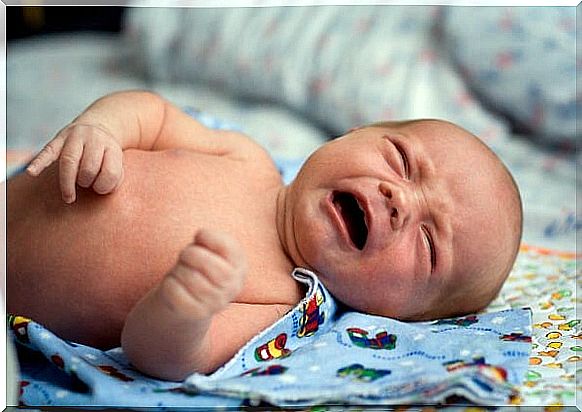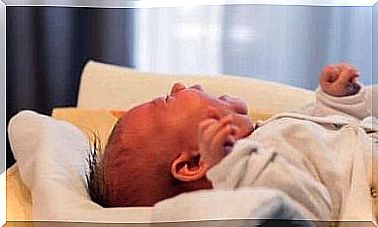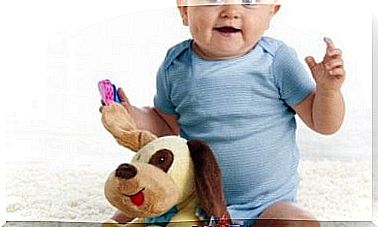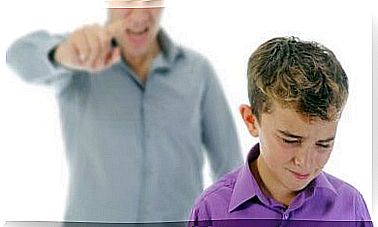Moro Reflex In Babies: Some Facts

The well-known ‘Moro reflex’ is one of the first reflexes that humans develop. Sometimes we are surprised when we see our children display this reflex. And sometimes we even worry when we see the subtle jerks with which the baby opens his or her arms and stiffens.
The first thing to know is that there is nothing wrong with your baby doing this. It is an involuntary reflex that disappears on its own around the fourth or fifth month of life.
In this article, we’ll take a closer look at the Moro reflex and try to answer your questions.
The Moro reflex got this name from the Austrian pediatrician Ernst Moro. He studied this around the turn of the 20th century. It is described as the instinctive reaction that occurs when the child thinks there is no secure support, or when they suddenly change position.
They may also experience the Moro reflex when they hear an unexpected sound or come to realize that they are falling backwards. It is an important reflection of the development of the baby’s central nervous system.
In other words, involuntary reflexes show that the baby is developing normally.

It is doctors and especially pediatricians who study and monitor these reflexes. They can tell whether or not the baby’s nervous system is developing properly.
To see this, they put the baby in a certain position so that the brain is tricked into evoking the reflex they want to see.
To confirm or rule out the Moro reflex in babies, a simple test should be done. During a consultation, the pediatrician will place the baby on a soft pillow. He will shake the head briefly and then briefly pretend to drop the head. He will immediately grab the baby again so that the child will not fall on the pillow.
They do this to make the baby feel out of balance. In this way, the Moro reflex is automatically activated. This is what pediatricians want to see. Be careful! Never lift the baby’s entire body from the pillow. The head alone is sufficient to simulate the feeling of falling.
Feeling that falling is inevitable will shock the baby. The normal reflex is that the baby will move his arms to the side. The palms will be facing up and the fingers extended.
When the fear disappears, the baby will relax again. The arms will be brought back to their bodies.
Keep in mind that a baby’s brain is still developing. Sometimes even dreaming can throw them off balance. Sneezing can also trigger the Moro reflex. An unexpected sound or being tickled can also cause the nervous system to react in this way.
It can be a little scary for parents when they first see this. After all, the baby stiffens and the color of the skin can change due to the increased blood pressure. However, there is no cause for concern as this is all part of a baby’s normal development.
After 5 or 6 anxious seconds, the baby will normally begin to cry. It is very important that you make them feel safe and can let them relax. In this way you can avoid a prolonged feeling of discomfort.
It is also important to point out that even babies who are lying in their cribs or sleeping can experience the Moro reflex. Out of nowhere they stretch out their arms, stiffen and begin to cry.
- Startled look in baby’s eyes. Eyes wide open.
- The baby stretches out his arms with the palms up and the fingers extended. After a few seconds, when the reflex stops, the body will relax and the baby will bring the arms back to the body.
- Suddenly bursting into tears.
If pediatricians cannot detect this reflex, they may suspect a nervous system disorder. Therefore, they can then examine the child for signs of hemiplegia, certain forms of paralysis or a fracture of the collarbone. Even if this reflex continues to occur after the eighth month of life, this may indicate a disorder of the nervous system.
Try to calm your baby when you see that he or she is experiencing the Moro reflex. Do not immediately take the child in your arms. Caress them and little by little they will relax again. The Moro reflex is a primary reflex that indicates the normal development of a baby’s central nervous system. Around the fourth or fifth month, this reflex should disappear on its own.









